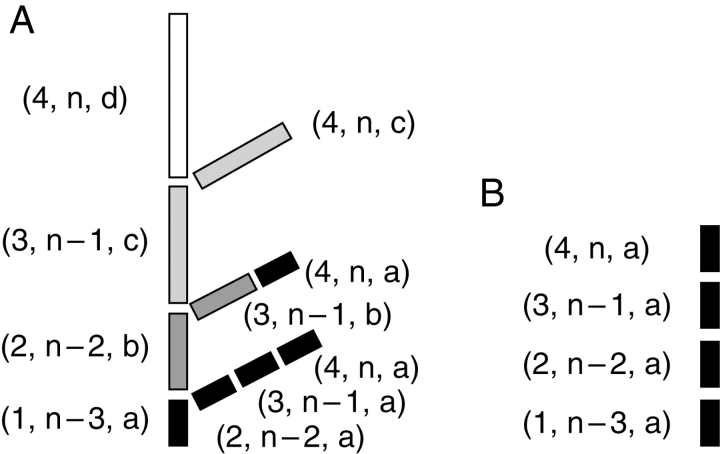Fig. 33.
Diagrammatic representation of a theoretical plant whose elementary botanical entities produced by the meristems (for instance annual shoots, represented by rectangles) may encompass four different physiological ages (a–d). The ‘plant’ grows from seed in four steps (possible ontogenetic ages 1–4), each step corresponding to one year of growth (n – 3 to n). It is hypothetically represented as growing in ‘good’ environmental conditions (where the main stem expresses the four possible physiological ages successively and in relation to successive four ontogenetic ages and where branches fully express morphogenetic gradients as shown in Fig. 30: case ‘A’), or in suppressed condition (as for the growth of Araucaria araucana in Fig. 20; case ‘B’). Each entity is characterized by a trinom – where the first element represents ontogenetic age (1–4), the second element represents calendar age (n – 3 to n) and the third element represents physiological age (a–d) – that allows us to understand the structure of each entity in the whole architecture of the plant (represented in A and B 4 years after germination).

